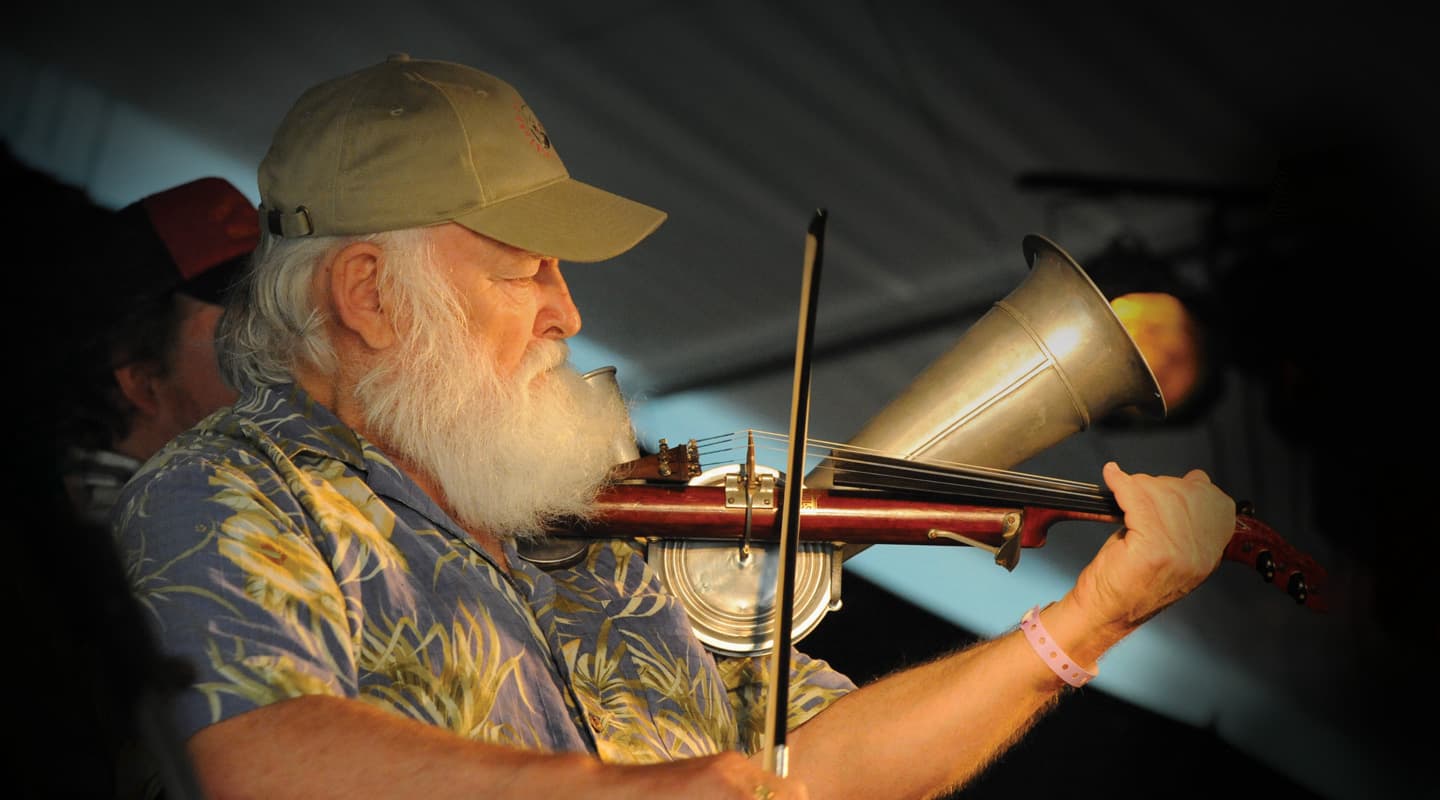
Harrietville Bluegrass Convention
Australian music festivals aren’t all created equal, we know that. But have you ever heard of one where D.I.s are banned and most bands crowd around a single mic? Mark Woods puts us in the thick of it.
The annual Harrietville Bluegrass Convention has been and gone again, and as usual it’s taking me a while to readjust to normal society again. With its unique atmosphere, ubiquitous banjos, and the opportunity to enjoy four days of fine audio at high volume, Harrietville has become one of my favourite mixing jobs of the year.
THE MUSIC
Held in a picturesque setting high in the Victorian mountains, the bluegrass convention features international headline acts alongside the best Australian bluegrass and traditional country music performers. The headline acts, and their hats, are the real thing and often come from the Appalachian Mountain district in the south-east of the US. Bluegrass evolved as hillbilly dance music in the late 1940s and the performers take great pride in their ownership of the high and lonesome sound – and they play like they’re being chased by the devil.
At Harrietville the bands get to perform in a concert setting every day and develop a relationship with the audience that starts on the Thursday night and builds through to the final concerts on the Sunday. The audience members range from fans to fanatics and during the concerts they hang off every note, applaud good solos and sometimes spontaneously sing along. They too feel an ownership of the style and I’ve heard the expression ‘our music’ more than a few times now… I can’t think when I’ve ever heard it in relation to any other style of music.
Before, after, and around the concerts are acoustic sessions that reflect the heart and origins of the music. Bluegrass attracts some fantastic players and when these largely improvised sessions get going with a few good players, they really cook. Bluegrass is musically inclusive and players of all abilities are welcome to sit in and play along at whatever level they can, and because bluegrass songs are all the same it’s easy to hear the chord changes coming. Sorry… I know they’re not really all the same… but they’re similar. Anyway, the sessions start before I wake up and then go all night long… no-one wants the music to stop.
SERIOUS ABOUT PA
Sound mixing for bluegrass concerts is taken very seriously, and Harrietville is no exception. Unlike many other music genres, the organisers, audience and performers all have an unusually keen interest in the sound quality. Whenever I mix at Harrietville I always get the feeling I’m being handed a special sound, one that I’m expected to treat with great respect. To those who can hear it, bluegrass is beautiful acoustic music, ideally enjoyed un-amplified from within a few metres of the performers. Moving it to a concert setting inevitably changes all this, but this is where bands can show off their musical arrangements, and the relatively formal presentation encourages polished performances. It’s still impossible to fully create the warmth and life of the raw sound with microphones and speakers – there’s a loss of intimacy due to the distance between the performers and the audience – but with some electronic power behind the music the bluegrass sound gets bigger and stronger and kicks arse relative to the acoustic setting.
A ‘bluegrass’ PA needs to be coherent and evenly focused, about the same size as you might use for bands (do people still use the 10-watt per person rule?) and tuned for a flat frequency response rather than any sort of rock ’n’ roll ‘smile’ that features lots of bottom and tops. Bluegrass songs are always about death, or cheating, or getting drunk and for the full emotional impact the vocals need to be clear and accurate. The instrument sounds are detailed and precisely played, and the songs go from a whisper to a roar; so while the average volume is not high, by traditional rock ‘n’ roll levels, there are still big peaks from both the instruments and the delivery. Consequently, the system needs the ability to handle transients well and have plenty of headroom.
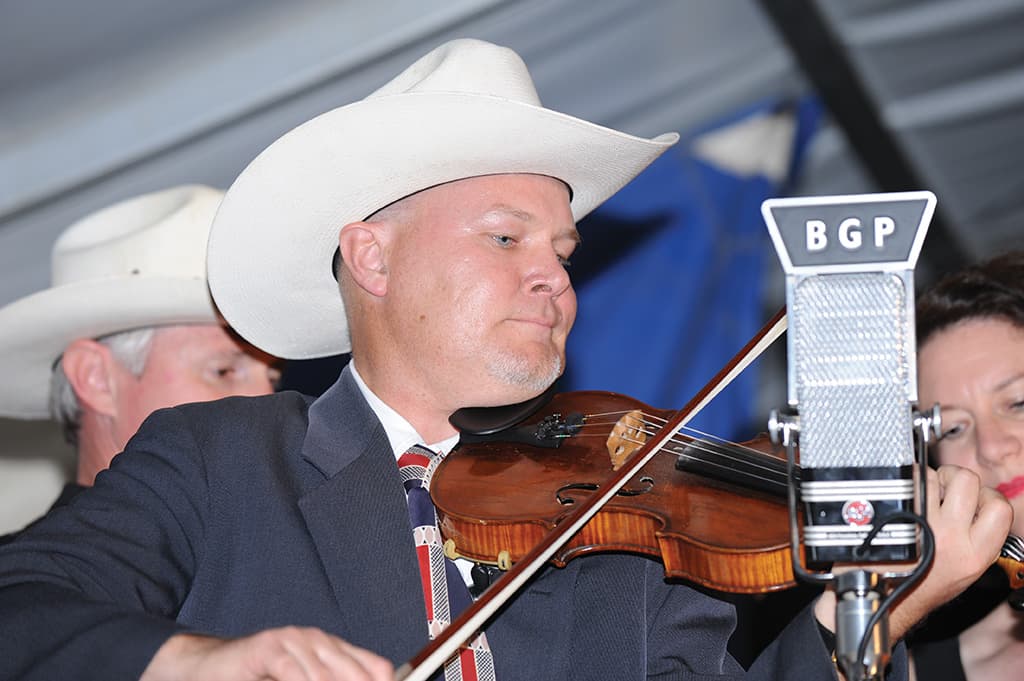
SINGLE MICROPHONE THEORY
Once the PA has been sorted microphone choice is everything, and this is where a bluegrass festival differs from most other live shows. Traditionally, amplified bluegrass has been performed using a single microphone with the band members moving around the front of the mic to achieve the desired balance. This is no job for a dynamic mic and condensers with a cardioid pattern are always used. In this context, the sound quality of a single high-end condenser mic is unbeatable. I use my ‘the better things sound, the louder they get mixed’ rule – but there’s only so far any mic can be opened up through a PA before it becomes unstable and microphones with a flat frequency response, both on and off-axis, work best. Large-diaphragm condensers are often used – and they look the best on stage too – but small-diaphragm condensers are usually more accurate off-axis and that was the reason this year’s main act, Hungry Hill from Canada, used a couple of Neumann KM184 SDC mics – one placed in the middle of the stage and one off to the side as a spot mic. They didn’t look very impressive, but they sounded great both on-axis and whenever a song arrangement dropped down to a gentle acoustic guitar played two metres away from the mic off-axis.
I have my own preferred large-diaphragm condenser (an M-Audio Sputnik), but quite a few of the acts carry their own mic(s), which can be challenging, as they’re all different. Finding how far each of these can be opened up without encountering instability or feedback during the first song is where a mix engineer really earns his (or her) dough. If there’s a bass it usually gets a separate mic and some acts add one or two spot mics for solos or for changing the instrument balance. During the concerts a steady hand on the centre mic fader is crucial. The main mic inevitably gets opened up to within a couple of dB of becoming unstable during soft sections, but it also needs to come down during loud sections, sometimes quickly and sometimes up to 10dB if a performer gets too close to the mic and lets one go. It’s rewarding though. When a mix is sitting properly with a band that knows how to work the mic, it’s the purest sound you’ll ever hear from a PA.
MULTI-MICROPHONE
Of course, only about half the acts use the single-mic technique. Others use a vocal mic and an instrument mic for each performer, sometimes up to six of each, and it’s often necessary to change from the single-mic setup to the multi-mic setup very quickly… they’re not really into the whole changeover thing. It’s more like one band finishes and the next one walks on stage! It keeps the show flowing and the sound crew hopping. The multi-mic acts usually get normal dynamic vocal mics. They’re easy to manage but sound somewhat muffled and inordinately close after you’ve grown accustomed to hearing the vocals of the previous act through the nice condensers. The instrument mics are more of a challenge. They can pick up lots of vocals as well as their intended instrument and this has a nasty smearing effect when combined with the vocal mic. I’ve used a variety of small-diaphragm condensers in this context, but while they usually sound good, their pickup pattern is often too wide. I’ve tried dynamic mics (like the Shure SM57A) for their tight pattern and reasonable high-frequency response, but they don’t have the detail of a good condenser.
This year I used a selection of handheld condenser mics for the instruments and was very happy with the results. Setting up always involves mic comparisons and this year I used Shure Beta 87As on banjo and dobro, a Neumann KSM104 on fiddle, a fairly bright SE Electronics H1 for guitar and an Audio-Technica AE5400 large-diaphragm handheld for mandolin. All were designed for vocals but proved just as suitable for instruments, combining the detail and fast transient response of a small-diaphragm condenser with the tight pickup pattern of a vocal mic. The low-frequency response shape, tailored to minimise the proximity effect, also helps when a musician plays right on the mic. These mics are also fairly rugged; and need to be – all live mics hit the floor occasionally even at a bluegrass convention. The double bass – or ‘bass fiddle’, as it’s correctly known in bluegrass circles – is a big part of the sound and after many mic shoot-outs during setup, my reasonably inexpensive Studio Projects B1 condenser keeps getting the nod.
The multi-mic approach works best for loud acts or those bands not familiar with the single mic approach. The mixing technique is based on the bluegrass notion of ‘leave ’em hot; we’ll move in and out’, and to a point this works. To avoid too many condensers being too far open all the time though, I like to follow the music and slightly fade back any channels not being used, fading them up again as required. Multi-mic’ing allows for volumes approaching plugged-in acts… only on the loudest of peaks of course – noone wants rock level at a bluegrass convention and that suits me just fine. I enjoy the blast of a band regularly enough, but it’s a pleasure to be able to mix several concerts in one day and still be able to think.
My first reaction was: ‘if she wants a D.I. she can have it’, but after being heavied by the boys in blue(grass) I relented, removed it and set up a mic
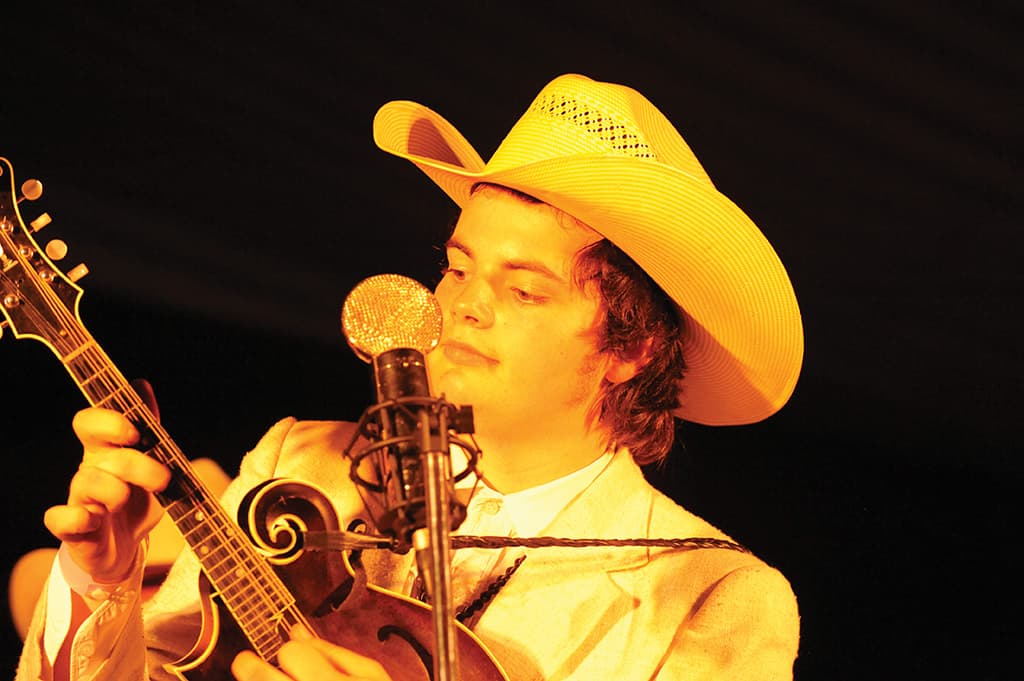
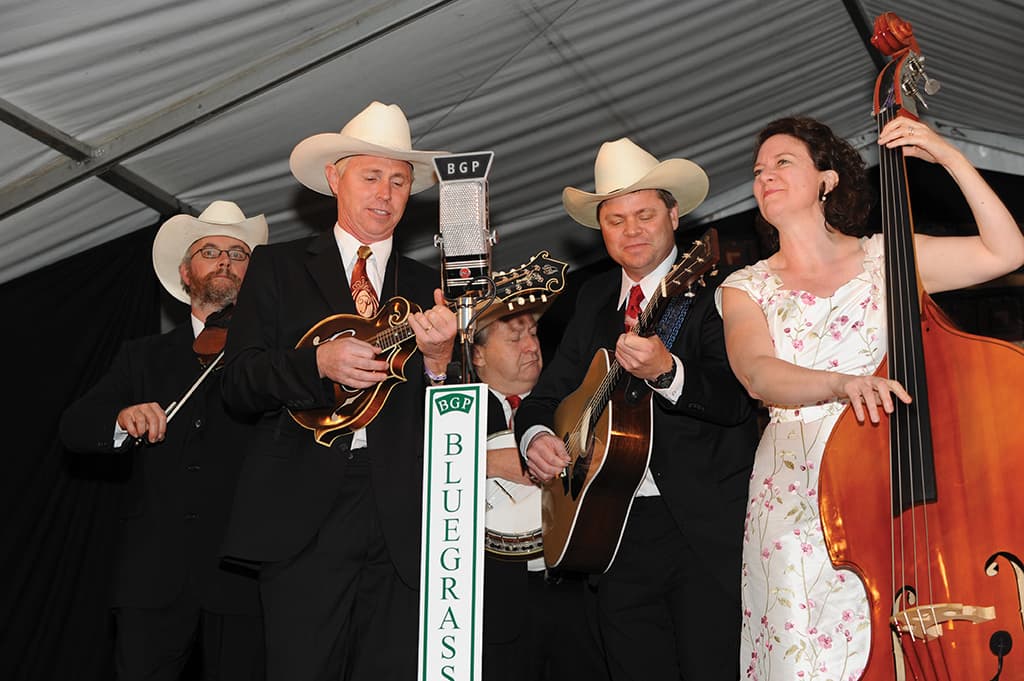
THE RULES
There are rules in bluegrass. Musically, songs are either bluegrass or they’re not. Instrument amps and drums are not welcome. There’s a ‘no-D.I.’ rule across the board, and this caught me out the first year. A performer asked if I could D.I. her guitar and I instinctively obliged. I connected her guitar to the PA without incident, but just before the band started someone from the bluegrass police tapped me on the shoulder, asked me to remove it and put a mic in front of the guitar instead. My first reaction was: ‘if she wants a D.I. she can have it’, but after being heavied by the boys in blue(grass) I relented, removed it and set up a mic. There was some discussion about it afterwards and the rule was justified on the grounds that it was an ‘acoustic show’. There was also the comment: “why do you want that shit sound [from a D.I.]?” muttered by someone during the discussion. And in the bluegrass context, they were right. Nowadays I don’t even bother taking my D.I.s to Harrietville. I know you need them for high volume shows and running around the stage, but even the very best pickups sound artificial compared to a suitable microphone and I applaud the bluegrass community’s insistence on seeking the pure sound. Another benefit of not using D.I.s is that you don’t get that notoriously loud bang when a musician pulls his or her guitar lead out before you can mute the channel!
It’s not a hard rule, but foldback also tends to be frowned upon. Bluegrass was developed primarily by bands led by the revered mandolin player, Bill Monroe, and he is often quoted as having said, “foldback ain’t good for nothing”. I don’t know if the quote is truthful or not, and it will sound crazy to all those rock musicians out there, but no foldback works for bluegrass and the result is a very clean stage sound. I usually run wedges across the front with hardly anything in them, unless I get a specific request, but before this year’s opening night concert, both headline bands said they didn’t want any foldback so the organisers and I made the executive decision to remove them from the stage entirely for the duration of the convention. I was prepared to put them back if anyone really insisted, and a few performers were nervous about it when they walked on stage, but once they started and could hear the PA they were fine. From the side of the stage, with the PA running, the stage sound was big and clear. The stage also looked much better without wedges blocking the performers’ feet.
THE RECORDING
My audiophile colleague,Greg Bartlett, records the Harrietville concerts every year and for inspiration we stay up late listening to the acoustic sessions until one of us inevitably says, “that’s the sound!”. Like the PA, the recording can’t capture the exact sound of acoustic bluegrass, but we’re getting closer every year. The current technique involves recording to Nuendo at 24-bit/96k via the Allen & Heath ML3000 mixing console’s direct outs into a Lynx Aurora 16, connected via AES/EBU to an RME HDSPe card. Each stage mic and two audience mics are recorded separately, and during the weeks following the convention I mix the shows to stereo files and make CD copies for the bands.
THE END
I almost added ‘no sleep’ as another rule of bluegrass. After the night concerts finish at Harrietville, the acoustic sessions continue and you can listen ’til dawn if you want to. This year’s event ended for me at around 4am on the Monday morning when a popular performer fell through the side of the tent just as he hit the big note in a song. There were a surprising number of people still listening and everyone fell about laughing. I went to sleep with a smile on my face and banjos running ’round in my head.
Many of the performers and audience members return year after year so the slight sadness everyone experiences at the end of the convention is tempered by the knowledge that there’s always next year…


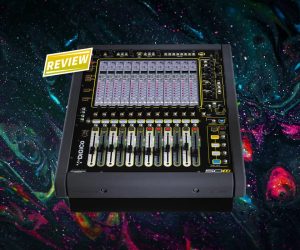

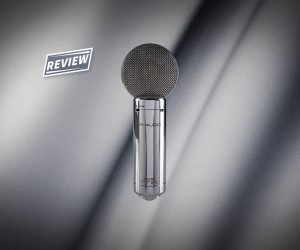











RESPONSES